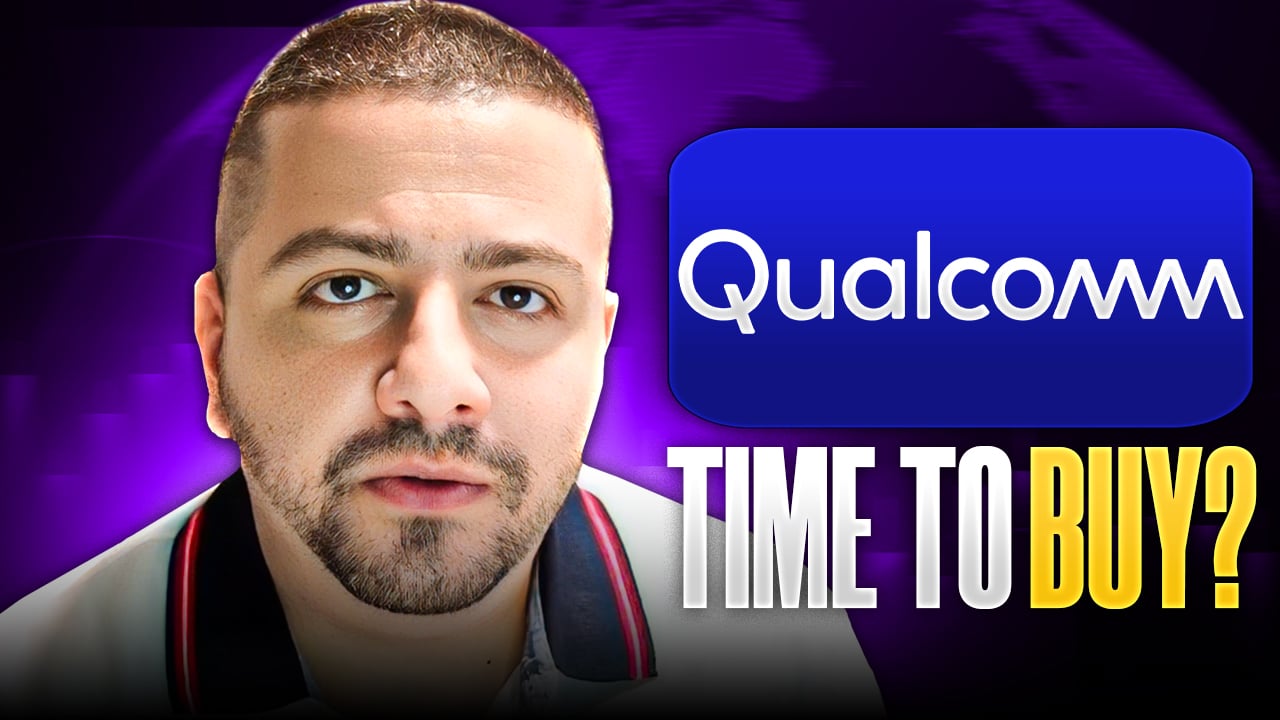Chipmakers NVIDIA Corporation (NVDA +3.00%) and Qualcomm (QCOM 1.88%) play an integral role in the tech industry. Qualcomm has a long history of selling its application processors and cellular connectivity chips into mobile devices so that they can connect to the internet. It's built a strong business on its early lead in 3G and 4G technology, and benefited for years by licensing those patents to other companies.
Likewise, NVIDIA products form part of some of the best technology on the market. The company's graphics processing units (GPUs) are used in an array tech from PCs to mobile devices, as well as servers and even driverless-car computers.
But even though both companies are helping to make some of today's best technologies a reality, they aren't equally good investments. Let's take a brief look at what each company is doing in its respective markets right now, and find out why NVIDIA looks like the better long-term bet.

Image source: Getty Images.
The case for Qualcomm
Check out the latest Qualcomm earnings call transcript.
One of Qualcomm's biggest opportunities comes from 5G, the next cellular wireless standard. 5G networks will bring faster data connections, reduce latency (the delay when a device communicates with its network), and help more Internet of Things devices come online.
All of the major U.S. wireless carriers are currently working on building out their 5G networks, which will likely be rolled out nationwide sometime next year. The opportunity for Qualcomm here comes from selling its 5G chips into the latest mobile devices. There are only a handful of 5G phones set to come out within the next year, but the number should explode over the next few years as the $619 billion global 5G market materializes.
Qualcomm CEO Steve Mollenkopf said on the most recent earnings call that 5G represents "a significant opportunity for Qualcomm to expand revenue and earnings as we exit fiscal 2019."
While 5G does represent a huge opportunity for Qualcomm, investors should also be aware of some of the significant hurdles the company faces. The most recent stumble comes from Qualcomm's decision not to sell its latest cellular chips into Apple's iPhone. Qualcomm had been supplying these chips to Apple for a long time, but a recent disclosure by an Apple executive showed that Apple wanted to continue buying chips from Qualcomm but the tech company refused to sell them. The relationship between the two companies is tense as Apple is considering developing its own 5G chip.
Additionally, Qualcomm used to benefit immensely from its patent licensing business, but lawsuits from Apple, China, and others have reduced how much the company can license its patented technologies for. The company is trying to rebalance the drop with chip sales, but it hasn't been an easy fix.
Bottom line: While Qualcomm certainly has significant new opportunities from the development of 5G networks, some of its prospects remain murky because of its strained business relationship with Apple.
The case for NVIDIA
Check out the latest NVIDIA earnings call transcript.
NVIDIA makes the majority of its revenue (more than 55%) from selling its GPUs for the gaming market. This success has helped fuel the company's growth over the past few years, but NVIDIA hasn't been content to sit back and ride that wave. The company has also strategically used its GPUs to expand into other markets, including artificial intelligence (AI) and autonomous vehicles.
The company's chips have proved very useful in servers in processing information for AI algorithms. Some of the world's largest tech companies, including Alphabet's Google and Amazon, use NVIDIA's GPUs for some of the AI data processing. NVIDIA's focus on getting its GPUs into the broader data center market has resulted in a year-over-year revenue increase in that segment by 58% in the most recent quarter.
Additionally, NVIDIA has targeted the nascent driverless-car market for future revenue growth. NVIDIA makes just 5% of its total sales from its automotive segment, but the company's latest autonomous-vehicle platform, Drive PX Pegasus, is being used by more than 200 companies to help develop self-driving vehicle tech. NVIDIA is playing the long game with AVs, and betting that its driverless-car platform and GPUs will benefit as more driverless cars hit the road. IHS Markit estimates that annual sales of autonomous vehicles will surpass 33 million in 2040.
Like Qualcomm, NVIDIA faces challenges. Most notably, its share price fell more than 30% in 2018 as the company dealt with a glut of GPU inventory that was left over after the cryptocurrency mining bust in early 2018.
Thankfully for NVIDIA investors, those inventories are just a temporary problem, and not indicative of NVIDIA's long-term prospects in gaming, AI, or autonomous vehicles.
The verdict
While both companies have lots of potential in current and future technologies, NVIDIA gets the win here because of the diversification of its opportunities. Qualcomm will likely still benefit from 5G and its mobile processors, but its stumble with Apple could have lasting effects for the company. In the short term, it causes Qualcomm to miss out on potential revenue, and over the long term, it may call into question Qualcomm's commitment to being a reliable supplier to its other customers.
Meanwhile, NVIDIA's largest sales segment, gaming, is still going strong, and the company has a healthy market share in the discrete desktop GPU market; that's not likely to change anytime soon. Additionally, NVIDIA will continue to benefit from sales of its GPUs into the growing AI data center market. And the company's early moves into the driverless-car market could give it an advantage.
NVIDIA's current strengths and its prospects in varying markets far outpace Qualcomm's potential. Qualcomm is in the midst of rebuilding its business after leaning on its patent licensing business for years, but that makes it a far riskier bet compared to NVIDIA's stability in the gaming and data center markets.







